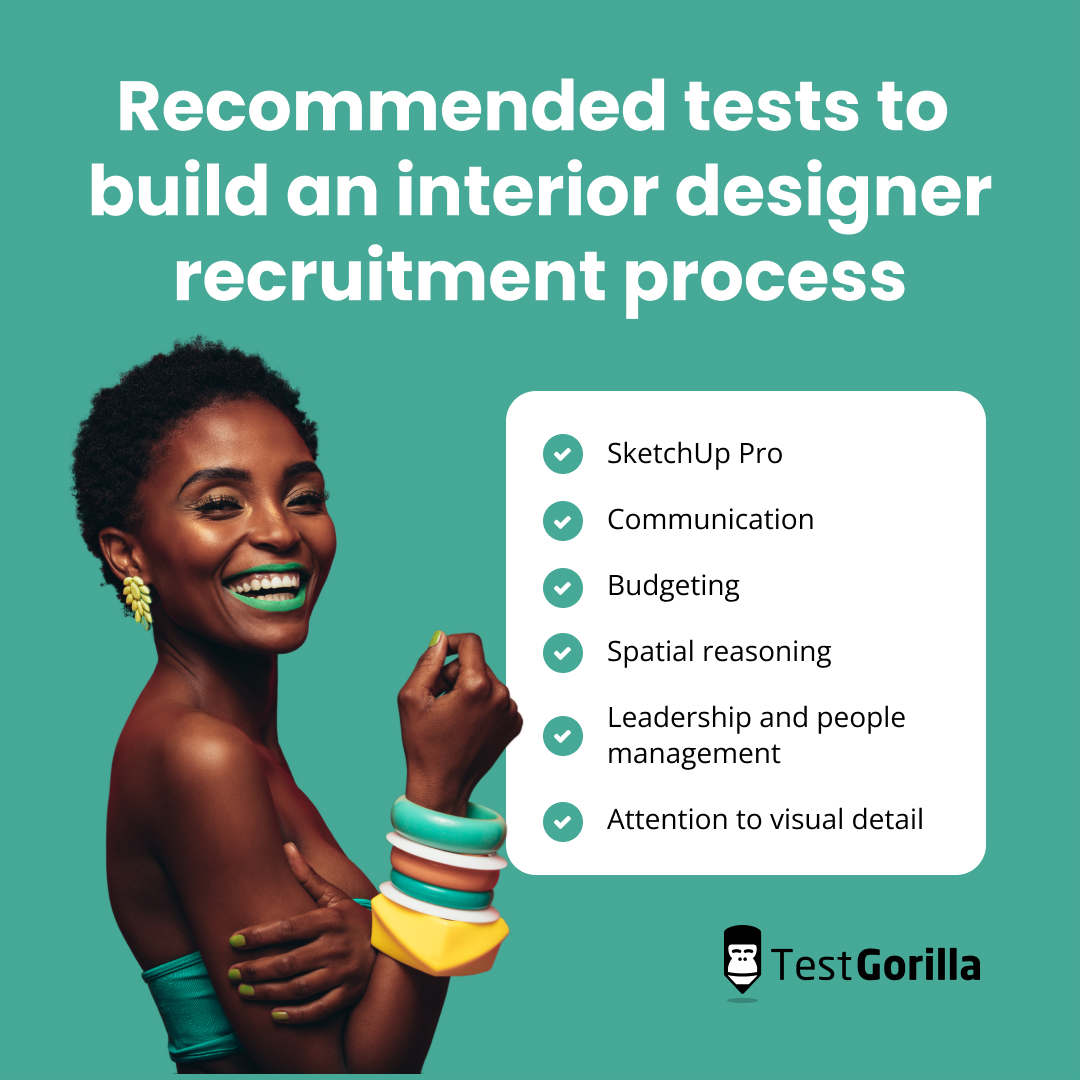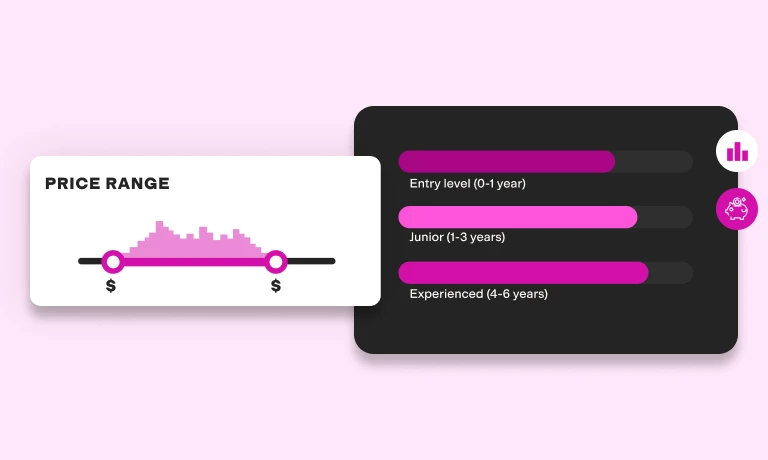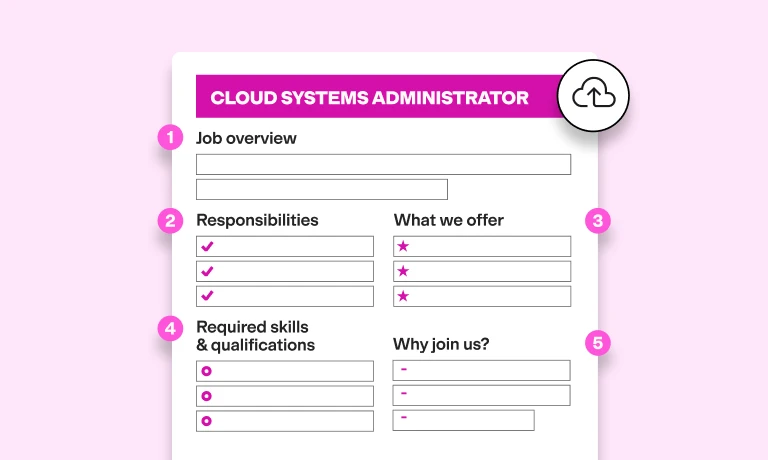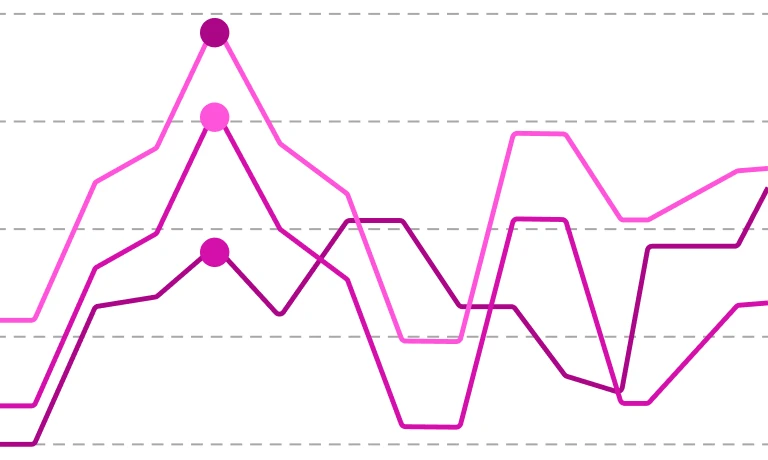Are you planning to renovate your house or give the living room a makeover? Setting up a new office that you want to be functional, colorful and fun?
Hiring an interior designer can significantly improve your chances of creating a space that’s beautiful and practical at the same time and also help you save time and money. However, finding a skilled interior designer can be a huge undertaking.
Your interior space is a reflection of your personality – and every house or office has a different story to tell, even in a building where every unit is similar on paper. It's how you style your space that sets it apart from others.
That is why hiring an interior designer who can bring your vision to life is essential.
This article will help you find and hire the best interior designer for your project. We'll look at some of the skills an interior designer must have, such as spatial reasoning and attention to visual detail, how to assess them, and where to find an interior designer who can help you achieve the best results.
Plus, we’ve got another secret weapon to help you in your search for candidates with interior design skills. It’s our SketchUp Pro test, and it will screen your applicants to discover the ones who can use the software to create detailed and organized 3D models for presentations and photorealistic renderings.
Don’t leave the task of hiring skilled interior designers to chance or to outdated CV screening processes – find out everything you need to know about hiring an interior designer here.
Table of contents
- What is an interior designer?
- Interior designer hard skills
- Soft skills for an interior designer
- How to test interior designer skills
- Where to find an interior designer
- Sample interior designer job description template
- How much does an interior designer cost?
- Interior designer interview questions
- Hire the best interior designer with skills testing
What is an interior designer?
An interior designer is an expert in creating functional and visually pleasing interior spaces. They possess a deep understanding of design principles, color schemes, materials, and spatial planning.
Designing a house or office space requires deep knowledge of space use and materials. The designer decides everything from wall colors, lighting, flooring, furniture, air vents, electrical sockets, and even linens to give the space an aesthetic look while maintaining functionality.
Interior designers create plans and designs for residential, office, and commercial spaces. They understand a client's needs and preferences, collaborate with artisans, contractors, and suppliers, and deliver the project while staying within budget.
There are no federal guidelines for becoming a licensed interior designer, but many states offer certification or registration. The International Interior Design Association and the American Society of Interior Designers advocate for legislation that enables qualified professionals to use the title “registered” or “certified” interior designer.
Interior designer hard skills
If you want to hire a pro, you need to know which hard skills to look for. Here are some of the must-have hard-skills of interior designers:
Technical and software skills
A strong foundation in design software has become an industry standard for interior designers, so proficiency in software solutions and computer-aided design tools like SolidWorks, SketchUp, and AutoCAD is a must.
These tools enable designers to create detailed layouts, 3D models, and renderings of the design to provide a visual representation to the client.
Spatial awareness
Knowing how to make the best use of the space you have available and how a piece of furniture fits in a room is one of the most important qualities of a successful interior designer.
The person you hire should have a keen understanding of spatial relationships, proportions, and how a room relates to its purpose and other rooms of the building. They must be able to think of innovative ways of getting the most out of a given space and improve its functionality.
Knowledge of building codes
Interior designers aren't just responsible for creating efficient and ergonomic spaces that enhance productivity and comfort; they also need to adhere to safety standards and legal requirements.
This means that they must be well-versed in fire safety regulations, accessibility standards, and other guidelines for the health and safety of anyone utilizing that space.
During the interview phase, assess the candidate's knowledge of building codes to ensure no safety issues during construction or renovation.
Lighting and color
Lighting is vital for creating ambiance, highlighting architectural features, enhancing the overall design; plus, it’s vital for the functionality of spaces. Similarly, colors and textures help bring everything together for aesthetic appeal and coherence and make everything more visually appealing.
An interior designer should understand different lighting techniques and have a keen eye for color schemes and textures. Knowledge of the color wheel, hues, and complementary shades is crucial to creating color palettes in line with a client’s vision.
Budgeting
Budget constraints are an essential consideration to make when designing an interior, so a skilled designer should have a firm grasp of budgeting and cost estimation.
They should be able to accurately assess project requirements, estimate material costs, labor expenses, and other charges to prevent cost overruns and ensure that the design aligns with the client's financial limits.
The best insights on HR and recruitment, delivered to your inbox.
Biweekly updates. No spam. Unsubscribe any time.
Soft skills for an interior designer
Interior design is not only about technical skills and know-how. An interior designer should also have a number of soft skills to be successful:
Communication skills
Effective communication skills are essential for an interior designer to establish strong client relationships and collaborate with other professionals involved in the project.
The person you hire should be able to listen to your needs and understand your preferences, requirements, and concerns and articulate design concepts clearly. Interior designers also need to work with contractors and construction professionals to:
Explain their design
Oversee timelines and budgets
Ensure the smooth execution of the design plan
Adaptability
Interior designers rarely work on the same kind of project twice.
Their work comes with unexpected challenges, so they must be able to adapt to different client requirements, budget constraints, and goals. They also need to be flexible for meeting varying deadlines of various projects and modifying designs to align with evolving project requirements.
Design trends and history
An interior designer should be familiar with various design trends and styles, such as French, Scandinavian, Mediterranean, or Art Deco design.
Knowledge of historical and contemporary trends enables the designer to combine multiple design styles and suggest innovative ideas. For example, you could ask for a modern space to be designed traditionally or mix and match different styles.
Sustainability is also something that the designer must be able to incorporate in their designs.
Detail-orientedness and problem-solving
Attention to detail and problem-solving skills are essential for any interior designer. From selecting suitable materials to the color scheme, lighting system, and furniture layout, attention to even the smallest detail is essential for designers to succeed.
They'll also need to come up with quick solutions to issues like spatial constraints, budget limitations, incorrect measurements, or technical issues.
Identify candidates with strong problem-solving skills and who work with precision and care.
Leadership and teamwork
Designers come up with ideas on a piece of paper; architects, suppliers, contractors, and other professionals working on the ground bring those ideas to fruition.
An interior designer must be able to work with interdisciplinary teams and convey their ideas effectively. Their leadership skills are necessary for team cohesion and synergy – and for the project's success.
Time management skills
Designers don’t just have to define a budget, but they must also provide clients with a realistic timeline to get the work done.
Good time management skills help ensure that a designer will stay on track and get the job done by the due date.
How to test interior designer skills
Now that you know the skills required for an interior designer, you'd want to know how to evaluate those skills and hire an interior designer that fits your requirements.
Asking friends and family for a recommendation or contacting your local design firm is fine if you're looking to hire an interior designer for a one-time job or the redesign of a single room.
For a large project, however, like designing an entire home or office, you'll want to assess every application and find a person who can provide excellent results. Interior design can be costly and you don’t want to waste your money on bad hires.
While portfolios and physical projects show a designer's abilities, you might not have the time to go through the portfolio of every applicant. Instead, you can use TestGorilla and its massive library of specialized online assessments to evaluate a designer's skills, knowledge, and capabilities.
Here are some tests that we recommend to help you build a streamlined interior designer recruitment process:
SketchUp Pro: If you need to hire an interior designer with solid SketchUp Pro skills, this test will help you effortlessly screen the best candidates. Applicants who perform well on this test have skills and experience using SketchUp Pro and can successfully complete and manipulate complex 3D models.
Communication: Evaluate candidates' skills in communicating clearly and effectively using professional etiquette
Budgeting: Hire employees who can understand and apply financial limitations and controls and create and analyze budgets
Spatial Reasoning: Evaluate a candidate’s ability to analyze 2- and 3-dimensional objects and space
Leadership and people management: Ensure that the interior designer can collaborate with different teams and guarantee the project’s success
Attention to visual detail: Assess the candidate’s ability to pay attention to visual details and cues in their designs
Where to find an interior designer
While you can plug in phrases like "hire an interior designer near me" in Google and get some results, it might not be the best way to find a talented designer – you’ll be looking at designers who have SEO-optimized their websites and Google My Business pages correctly, but not necessarily at the best talent out there.
Instead, try these strategies for your interior designer recruitment:
Referrals and recommendations
Tap into your local network and seek recommendations from friends, family, neighbors, and coworkers to get an idea about local designers.
Your real estate agent might have contacts with good designers, or you might also try looking for Facebook groups (or even Reddit channels) of your local community from where you can crowdsource information.
Referrals and recommendations can be a great way to hire a skilled interior designer who has done a good job in the past; plus, you can ask the person who recommends them additional questions and decide if they suit your needs.
Online platforms
Social media and online platforms like Facebook, Instagram, Pinterest, TikTok, and Houzz offer a vast pool of interior designers showing their projects and portfolios. This is a convenient way of checking out their work, pricing, and customer reviews, and you can find individual designers and design firms alike.
You can explore different styles and designs to find a designer whose work truly resonates with your vision.
Professional associations
One way to make your interior designer hiring process a bit more formal and professional is by contacting industry organizations such as the American Society of Interior Designers (ASID), Interior Design Society (IDS), and the International Interior Design Association (IIDA).
These organizations maintain directories of qualified interior designers with information about their degrees, years of experience, licenses, and skills, making them reliable sources for finding reputable interior designers.
Sample interior designer job description template
The below job description template is suitable for an agency looking to hire a new designer for their team, but you can use parts of it if you’re looking to revamp your house or office. In that case, make it shorter and make sure to provide a clear description of your project and requirements.
Keep in mind, however, that if you’re looking to redesign one apartment or office, it might be a better idea to post about it on local social media groups or on Craigslist, rather than on LinkedIn or a similar platform.
Position: Interior Designer
Employment Type: [Full-time/Part-time/Contract]
Job Summary:
We are seeking a talented interior designer to join our team. The ideal candidate will be passionate for design and have a strong ability to transform spaces into functional, visually appealing environments. They’ll be responsible for conceptualizing, developing, and implementing designs that meet our clients’ needs, preferences and requirements.
Responsibilities:
Collaborate with clients to understand their goals, functional requirements, and budget constraints
Develop design concepts, color palettes, mood boards, and presentations to communicate and visualize design ideas to clients
Create 2D and 3D design drawings, renderings, and layouts using AutoCAD, SketchUp, or Revit
Select and specify appropriate materials, finishes, furniture, fixtures, and equipment
Provide guidance and recommendations on color schemes, lighting, and spatial arrangements to enhance the aesthetics and functionality of the space
Ensure compliance with building codes, regulations, and industry standards throughout the design process
Collaborate with architects, contractors, and suppliers to coordinate project implementation and ensure timely and successful execution
Qualifications:
Bachelor's degree in Interior Design, Architecture, or a related field
[Specify the number of years of experience required]
Proficiency in [AutoCAD, SketchUp, Revit, or other design software]
Strong knowledge of building codes, regulations, and industry standards
Excellent visual and spatial awareness, with a keen eye for detail and aesthetics
Solid understanding of color theory, materials, finishes, and furniture selection
Strong interpersonal skills to communicate with clients and team members effectively
Experience in project management and coordination with contractors and suppliers
Please share a link to your portfolio or attach a PDF version of it with your application.
How much does an interior designer cost?
Interior designers’ salaries or fees vary depending on the project, client requirements, experience, and other factors.
According to Homeguide.com, if you’re looking to hire a designer on a project basis, you’d be looking at a cost per room ranging between $450 and $1500 or a cost per square foot of $5 to $12, which includes consultation, design work, and furnishings.
If you’re looking to hire an interior designer for a full-time role, then you should decide on your yearly budget. According to Glassdoor.com, the total yearly pay in the United States is approximately $86,000, which comprises a base salary of $64,000 and additional pay (bonuses, commissions, and more) of $22,000.
This is Glassdoor’s estimated median pay; salaries can range from $69,000 to $110,000 annually. Additionally, many interior designers work as freelancers or are employed by agencies on a contractual basis, so their annual income will also depend on the work they undertake and their charges.
Interior designer interview questions
Once you've evaluated and shortlisted candidates with the help of skills tests, it's time to ask them questions about their experience, abilities, and past projects. Here are some sample questions that you can ask during interviews:
Can you tell us about your design process and how you typically approach a new project?
How do you gather client requirements and ensure their vision is incorporated into the design?
How do you stay updated on and incorporate the latest design trends into your work?
Can you describe a challenging project you worked on? How did you overcome obstacles or resolve design conflicts?
How do you handle client feedback and revisions to your designs? How do you ensure that the final project meets the client's expectations?
How do you work on multiple projects in parallel and manage your time effectively to meet deadlines?
Can you provide examples of how you have incorporated sustainable design principles into your projects?
If you need more ideas, here’s a comprehensive list of interior-designer interview questions that you can ask candidates.
Hire the best interior designer with skills testing
Reading resumes, reviewing portfolios, and shortlisting candidates can be daunting. With the help of pre-employment skills testing, you can streamline the interior designer hiring process and save valuable time.
Simply build a skills assessment of up to five skills tests that evaluate candidates’ proficiency in key areas and then interview top talent. This will help you identify the best interior designer for your project and be sure that you’re making the right hiring decision.
Get started with a free trial of TestGorilla today and find the best interior designer for hire, bias- and stress-free.
You've scrolled this far
Why not try TestGorilla for free, and see what happens when you put skills first.



















